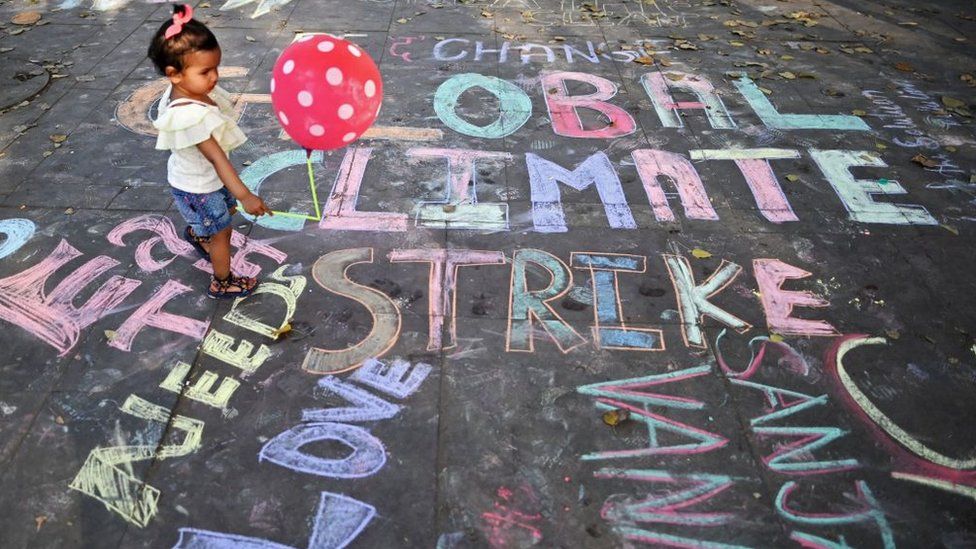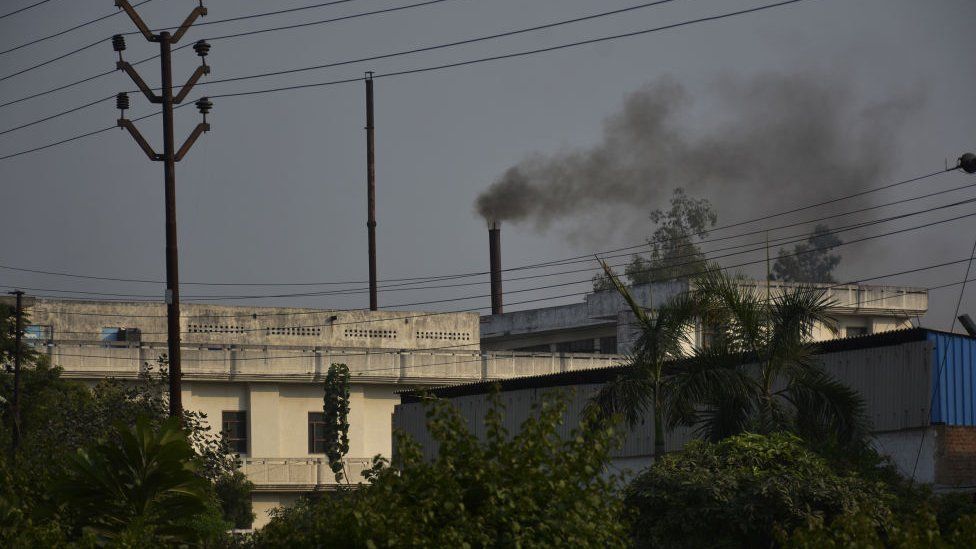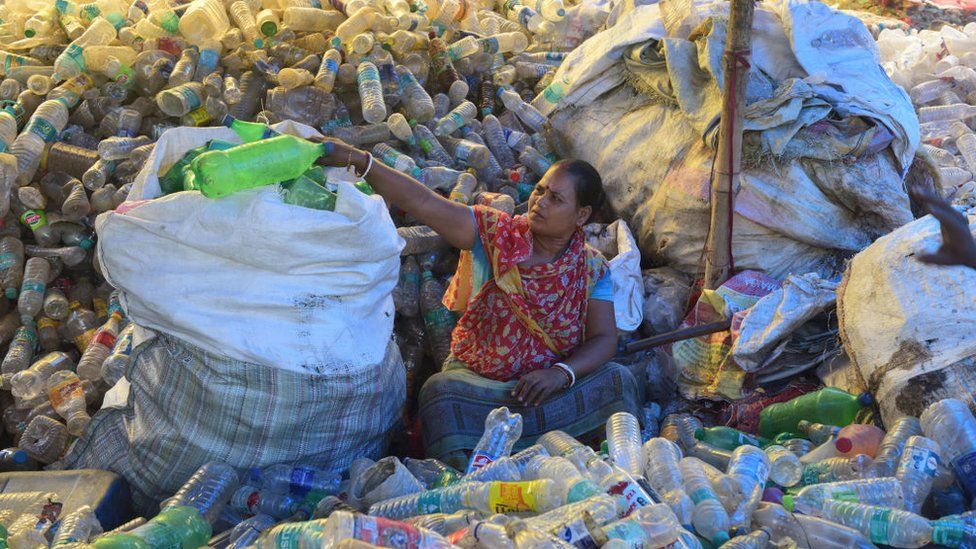 Getty Images
Getty ImagesIn its updated climate action plan submitted recently to the United Nations, India has mentioned adopting an environment-friendly lifestyle as a key way to combat climate change. But can the country balance this with its economic ambitions?
Country signatories to the UN climate change convention have to submit a plan – called the Nationally Determined Contribution (NDC) – every five years. This details how they plan to reduce carbon emissions – to help slow global warming – and adapt to the impacts of climate change.
India’s updated NDC includes measures such as reducing the volume of carbon emissions per unit of GDP and cutting down use of fossil fuels to generate electricity.
But at the top of the list is “LiFE – Lifestyle for Environment”, a “healthy and sustainable way of living based on traditions and values of conservation and moderation, including through a mass movement”.
“The vision of LIFE is to live a lifestyle that is in tune with our planet and does not harm it,” a government statement says. It was first proposed by Prime Minister Narendra Modi at the COP26 summit in Glasgow in 2021.
But experts say there is a contradiction between this aim and the increase in consumption that both drives and is spurred by economic growth.
“Modernity basically means increased consumption. The concept of LiFE is not in conformity with that trend of consumerism,” says Dr Nilanjan Ghosh, president of the Indian Society for Ecological Economics.

Growing consumption, rising economy
India is now among the world’s top economies, with estimated growth of around 7% this year – this is at a time when other major economic powers are facing a recession.
While inflation and global headwinds are causes for concern, consumer demand is strong. Private consumption forms about 55% of India’s GDP, and experts expect this to continue to drive growth.
This, Dr Ghosh says, is why there is a “dichotomy” in the government’s emphasis on LiFE.
“Will there be action to adopt a different lifestyle or will it be business as usual is the question,” he says.
Eugenie Dugoua, an assistant professor in environmental economics at the London School of Economics, says solutions to the climate crisis will need to put the focus on ordinary people like the LiFE campaign has done.
“But we should not be overly optimistic about how much emission reduction will come out of it,” she says, adding that research shows that while nudges like these can have a positive effect in the short term, this isn’t sustainable in the long term.

Behavioural change is “necessary and important”, but it can’t be the main tool for policymakers, she adds.
“Instead, governments need to focus on structural change in the energy, transportation and agricultural systems.”
Largest increase in energy demand
The biggest source of carbon emissions in India is the energy sector.
In its October report, the International Energy Agency said that India is likely to see the world’s biggest jump in energy demand this decade, although its energy use on a per capita basis is well under half of the global average.
Your device may not support this visualisation
Some experts believe lifestyle changes are possible even with a continued rise in consumption.
“It is not about asking people to not buy air conditioners, but we can make the habit of keeping our room temperature at 25C, which will lead to a cut in our energy consumption,” says Madhav Pai, acting CEO of World Resources Institute India, an international non-government organisation that is working with the Indian government to disseminate the message of the LiFE programme.
Mr Pai says the campaign envisages helping people to gradually change their lifestyle.
“It is a nudge to 1.5 billion Indians for behavioural change towards a circular economy – to make them sign up for it.”
A larger message
The Indian government has also positioned LiFE as a message to western countries.
“The consumption pattern of the world is mindless and pays scant regard to the environment,” wrote India’s environment and climate change minister Bhupender Yadav in the Indian Express newspaper in October, days after Mr Modi unveiled an action plan for Mission LiFE.
“Mission LiFE tries to remind the world that the mindset of ‘use and throw’ must immediately be replaced by ‘reduce, reuse and recycle’, he added.
But India is also facing its own share of serious environmental problems.

A report by Delhi-based think-tank Centre for Science and Environment showed that India generated 3.5 million tonnes of plastic waste in 2019-20, of which only 12% was recycled and 20% burned.
“The remaining 68% remains unaccounted for, which means it is in the environment (land and water) or in dumpsites,” the report said.
It also found that three out of every four river monitoring stations in India posted alarming levels of heavy toxic metals.
Air pollution is a major concern, especially in northern Indian states.
A World Bank report released earlier this year ranks India among the countries that have the worst environmental health – the government has contested the report’s methodology and offered its own environmental and sustainability parameters.
Successive governments have also been accused of ignoring environmental laws while pushing for infrastructure and development projects, especially in the fragile Himalayan region.
Experts say all this needs to be addressed by a government that wants people to change their lifestyles to fight against climate change.
“Change has to be wholesome,” Dr Ghosh says.
“The two [government’s actions and people’s behaviour] will need to be in consonance.”

Read more India stories from the BBC:









